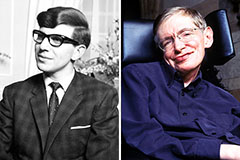Enhancing Accessibility With Assistive Modern Technology for the Blind
The assimilation of assistive technology for the blind stands for a pivotal advancement in accessibility, fundamentally modifying exactly how individuals navigate their environments and engage with society. As we explore the diverse kinds of assistive tools and their substantial effects on everyday living, it becomes important to analyze how ongoing technical innovations are improving the landscape of support for the blind community.
Overview of Assistive Modern Technology
Assistive modern technology refers to a variety of devices and software program created to enhance the capabilities of people with specials needs, including those that are blind or aesthetically impaired. This technology plays an essential duty in promoting independence and boosting the high quality of life for users. By giving different methods for accessing details and doing daily jobs, assistive technology encourages individuals to browse their atmospheres extra successfully.
The development and application of assistive technology welcome a variety of concepts aimed at promoting accessibility. These principles consist of user-centered design, which focuses on the needs and preferences of the person, and the integration of innovation right into daily tasks. Such advancements make sure that assistive devices are not only useful but additionally user-friendly and very easy to use.
Moreover, assistive modern technology encompasses a diverse range of remedies, from low-tech options like magnifiers to sophisticated advancements such as display readers and Braille screens. The recurring advancement of this field is driven by the need to attend to the one-of-a-kind obstacles encountered by people with visual disabilities (Wearable technology for low vision). As innovation proceeds to advance, the potential for enhancing ease of access and advertising inclusivity stays encouraging, inevitably adding to an extra fair culture

Sorts Of Assistive Tools
Countless kinds of assistive tools are readily available to sustain people that are blind or aesthetically damaged, each created to attend to certain demands and difficulties. These gadgets can be extensively categorized into three main kinds: low-tech, mid-tech, and sophisticated remedies.
Low-tech tools consist of products such as magnifiers, Braille labels, and tactile maps. These are relatively simple devices that boost the customer's capability to engage with their atmosphere without requiring complex technology.
Mid-tech tools typically involve extra sophisticated attributes, such as electronic magnifiers and mobile Braille note-takers. These gadgets can offer performances like speech output, enabling users to access information extra effectively.

Effect On Daily Living
The availability of different assistive tools significantly improves the high quality of life for people who are aesthetically impaired or blind, affecting their day-to-day living in extensive ways. By integrating innovations such as display viewers, Braille presents, and audio summary solutions into their routines, users acquire higher autonomy and self-reliance. These devices promote accessibility to details, enabling individuals to perform everyday tasks, such as reading emails, navigating public spaces, and taking pleasure in media material.
Additionally, assistive tools encourage people to engage more completely in social interactions and neighborhood activities. The capability to use mobile phones geared up with availability functions enables seamless communication and connection with others. This connectivity fosters a sense of belonging and lowers sensations of seclusion.
In expert setups, assistive innovation sustains performance by permitting individuals to total job tasks effectively. Tools like voice acknowledgment software program and specialized zoom devices enable customers to take part in the workforce on equivalent ground with their sighted peers.

Innovations in Modern Technology
Recent technological innovations have actually considerably transformed the landscape of devices offered for individuals that are blind or visually damaged. The assimilation of expert system (AI) and equipment discovering has generated applications that enhance navigating and item recognition. Smartphone applications can now use AI to recognize and explain environments in real-time, offering customers with important contextual details.
Furthermore, innovations in haptic innovation have actually led to the growth of smart walking canes equipped with sensing units that identify challenges and give tactile comments. This encourages users to browse their environment with enhanced self-confidence and independence. Advancements in text-to-speech software program and braille display screens have improved the availability of electronic web content, allowing for seamless interaction with different media.
Wearable innovations, such as smart glasses, are also making strides in aiding aesthetic problems. As innovation continues to evolve, the potential for also more transformative devices stays on the horizon.
Future Trends and Innovations
As technology quickly proceeds, the future of assistive tools for individuals that are blind holds tremendous promise. Advancements in fabricated intelligence (AI) and artificial intelligence are poised to transform the method blind customers interact with their environments. AI-driven applications are being established to improve things acknowledgment, permitting users to identify and navigate their surroundings with greater ease and accuracy.
Furthermore, improvements in haptic responses modern technology are making it possible for the production of responsive maps and navigating help that give real-time details via touch. These technologies not only enhance movement however also foster independence. Additionally, wearable devices equipped with increased fact (AR) attributes are arising, using customers visual info with audio descriptions, thereby bridging the void between the digital and physical globes.
In addition, the integration of smart davis vision home innovation provides brand-new chances for ease of access, enabling individuals to regulate their living settings through voice commands or smartphone applications. As cooperation between tech developers and the blind area proceeds, the concentrate on user-centered style will certainly see post ensure that future advancements are tailored to fulfill the special needs of this populace (Wearable technology for low vision). The trajectory of assistive innovation promises a much more comprehensive and empowering future for people who are blind
Conclusion
To conclude, assistive technology plays an essential duty in improving accessibility for individuals with aesthetic impairments. The varied array of tools, including display viewers and wise walking canes, substantially boosts everyday living and cultivates self-reliance. Continual developments in modern technology and user-centered design make sure that these devices cater successfully to the unique requirements of the blind area. As innovations development, raised inclusivity and empowerment can be anticipated, eventually improving the lifestyle for those impacted by aesthetic impairments.
The combination of assistive innovation for the blind stands for a crucial innovation in accessibility, fundamentally altering how individuals navigate their atmospheres and involve with culture.Assistive modern technology refers to a range of devices and software designed to enhance the capabilities of individuals with impairments, including those who are aesthetically damaged or blind. Wearable technology for Recommended Site low vision.As modern technology swiftly advances, the future of assistive devices for individuals who are blind holds immense promise. The trajectory of assistive modern technology promises an extra comprehensive and empowering future for people who are blind
In conclusion, assistive technology plays an essential role in boosting access for people with visual impairments.
 Charlie Korsmo Then & Now!
Charlie Korsmo Then & Now! Robbie Rist Then & Now!
Robbie Rist Then & Now! Brooke Shields Then & Now!
Brooke Shields Then & Now! Teri Hatcher Then & Now!
Teri Hatcher Then & Now! Stephen Hawking Then & Now!
Stephen Hawking Then & Now!